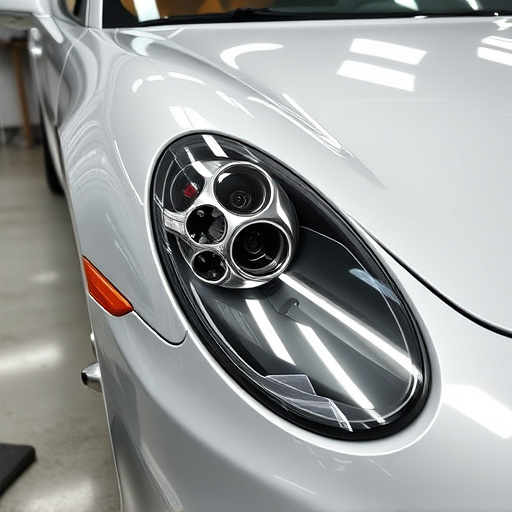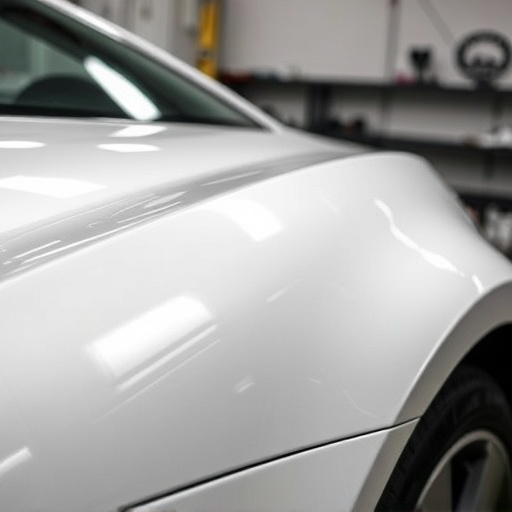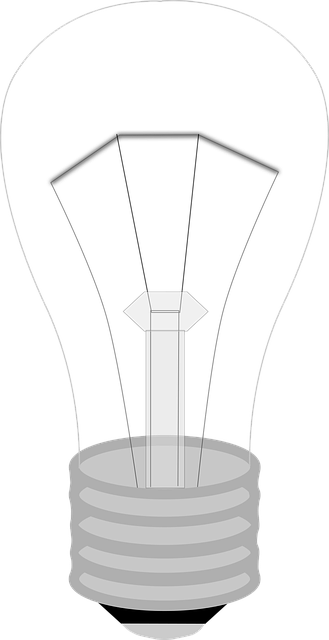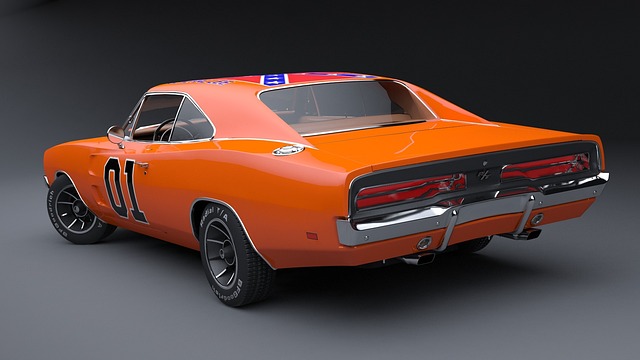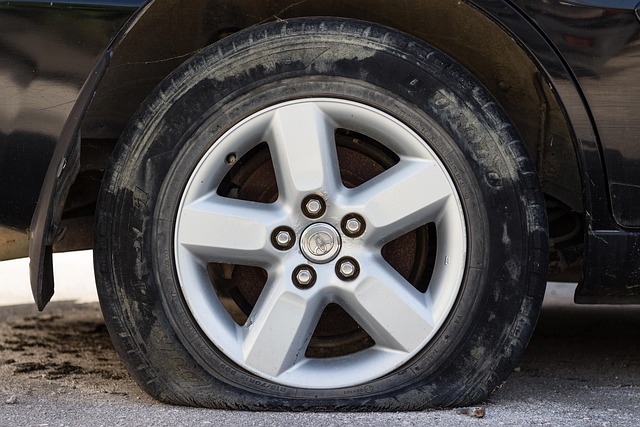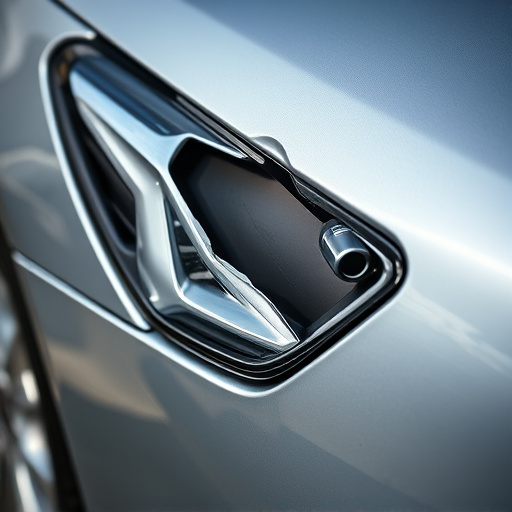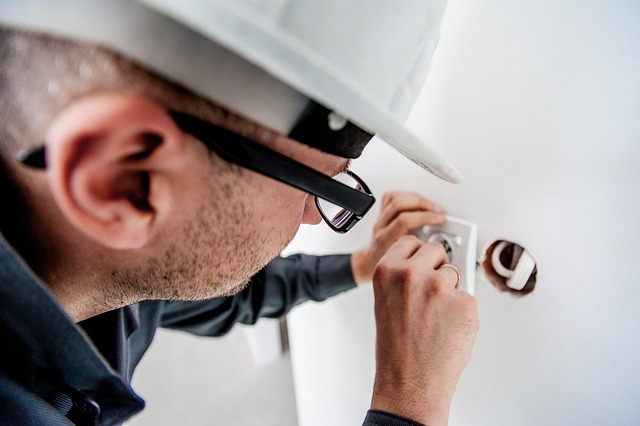Automotive refinishing times vary based on damage extent, paint type, environmental conditions, vehicle size, and complexity of repairs, which can include sanding, priming, and painting. Optimizing processes by breaking down tasks, using high-quality products, modern equipment, and skilled technicians is crucial for efficient, timely turnaround with flawless finishes, especially for complex cases like luxury vehicle repair or car dent removal.
Automotive refinishing is a meticulous process, and understanding its timelines is crucial for both professionals and enthusiasts. This article explores the duration of common refinishing techniques, uncovering the factors that influence these processes. From preparation to final coats, we’ll navigate the intricate steps, revealing optimal strategies to enhance efficiency without compromising quality. Discover expert tips to manage expectations and streamline your automotive refinishing projects.
- Understanding Common Refinishing Processes and Their Timelines
- Factors Affecting Automotive Refinishing Duration
- Optimizing Refinish Times: Tips for Efficient Completion
Understanding Common Refinishing Processes and Their Timelines
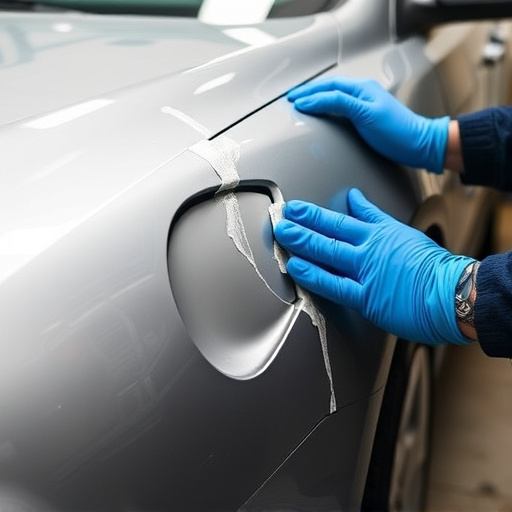
Understanding Common Refinishing Processes and Their Timelines
Automotive refinishing encompasses a range of processes from simple paint jobs to complete vehicle transformations. The duration of these projects varies significantly based on several factors, including the extent of damage, the complexity of the design, and the number of coats required. For instance, a standard touch-up job might take as little as a few hours, while a complete car painting process can extend over several days.
In a collision repair center like Mercedes Benz, where precision and quality are paramount, the timeline for refinishing services can be more meticulous. This includes not just the application of new paint but also repairs to paneling, primer, and other underlying components. For example, an auto glass replacement may take a few hours for installation, while ensuring proper alignment and sealing. These intricacies contribute to the overall time required for a comprehensive automotive refinishing project.
Factors Affecting Automotive Refinishing Duration
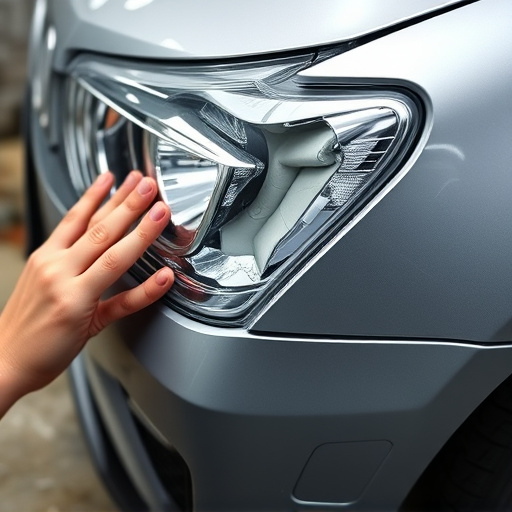
The duration of automotive refinishing can vary greatly depending on several factors. Firstly, the extent of the damage is a significant determinant; major repairs involving extensive paint removal and body work will naturally take more time than minor touch-ups or cosmetic enhancements. Complex repairs, such as those after a car collision repair, may require multiple stages, including sanding, priming, and painting, each requiring careful attention to detail.
Additionally, the type of paint used and environmental conditions can impact timelines. Newer, high-quality paints often have stricter drying times due to their advanced formulations. Humidity, temperature, and ventilation also play crucial roles; optimal conditions accelerate drying, while less ideal environments may extend the process, especially for car damage repair. Furthermore, the size of the vehicle and accessibility of certain areas can affect how quickly technicians can complete the refinishing work, influencing the overall duration of vehicle repair services.
Optimizing Refinish Times: Tips for Efficient Completion
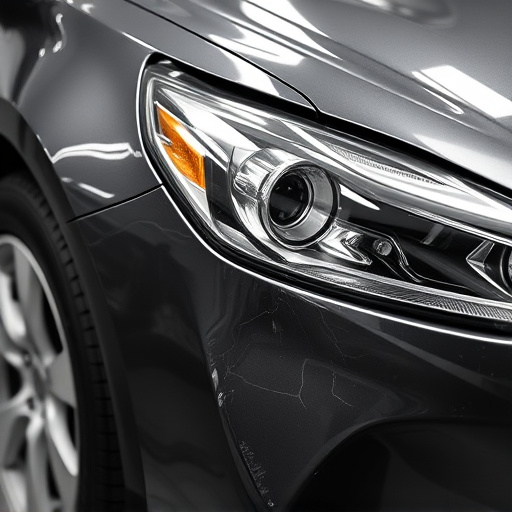
Optimizing Refinish Times is key to ensuring efficient completion of any automotive refinishing project. One of the most effective strategies involves breaking down the process into manageable stages, prioritizing tasks, and allocating sufficient time for each. This includes meticulous preparation, such as thorough cleaning and surface treatment, which can significantly impact the overall duration. Efficient use of tools and materials also plays a crucial role; utilizing high-quality products and modern equipment designed for automotive refinishing can streamline the process, reducing dry times and minimizing errors that require rework.
Additionally, skilled technicians contribute to faster turnaround times through their expertise in applying coatings evenly, understanding the chemical reactions involved, and knowing when to allow sufficient cure time. For complex cases involving luxury vehicle repair or car dent removal, these tips become even more vital, as meticulous attention to detail is required to achieve a flawless finish that meets high standards. Vehicle body repair demands precision and patience, but with the right approach, it can be accomplished in a timely manner without compromising quality.
Automotive refinishing times can vary greatly, but by understanding common processes, their influencing factors, and implementing efficient strategies, you can streamline the job. Remember, optimal finish quality doesn’t always require the longest duration; smart techniques can significantly reduce automotive refinishing time without sacrificing results. Embrace these tips to optimize your workflow and deliver satisfying, timely finishes.
